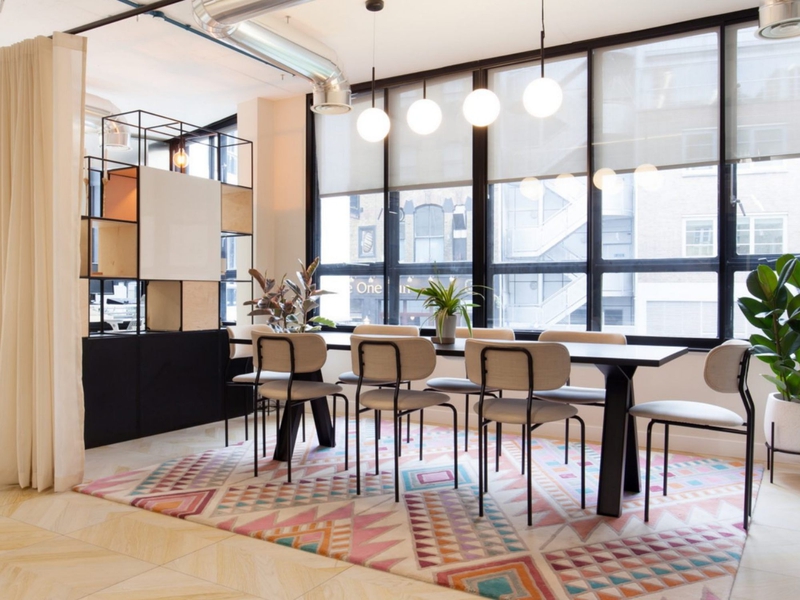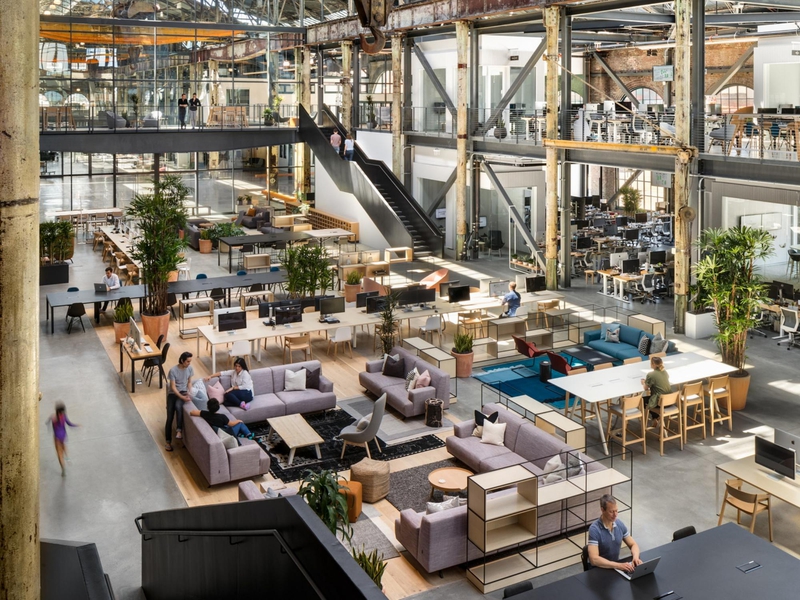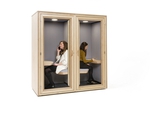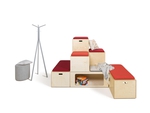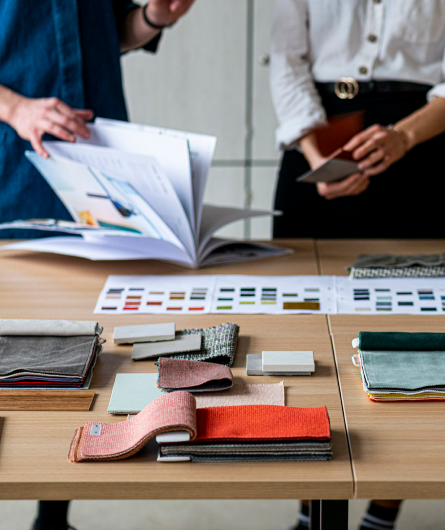27 mars 2019
Tendances du secteur
Don’t put your shields down just yet; the war on talent is far from over. As Lars Schmidt from Forbes says “it’s time to think of recruiting as something that doesn’t stop until an employee has left the building”. There are many ways to retain top talent, but you need to begin by using office design as a lever to attract top talent in to the organisation.
1. Layout
Many offices are adopting versatile open plan workspaces. By offering a sub-conscious seating menu, workers can automatically select what will work for them that day. An engaged employee will relish the choice available; where to sit, whether to work publicly or in private, the physical proximity to co-workers, the textiles and materials of their desk or chair and all this choice feels empowering. Being treated like an adult demonstrates trust from the top down.

2. Collaboration
Accidental collaboration is brilliant for generating ideas. Instead of designated break areas, comfortable and stylish design can enable ‘eureka!’ moments anywhere within the office. If you want the buzz of people around you, you can choose to sit near a chillout area or café. Alternatively, why not find yourself a quiet booth to have an interesting conversation 1-on-1 with a colleague to ignite the creative juices. The point is that no two days are the same, so allow employees the option of when and who they want to collaborate with.

3. Colour
Scientific studies have shown that colour is utilised to maximise productivity. Taskworld did a study on how each colour affects our work engagement:
- Blue – a stable and calming colour universally known to enable productivity by aiding concentration
- Green – resembling nature, green enables efficiency and good for those working long hours
- White – although seen as a clean colour, it can also be seen as sterile, clinical and isolating so best used minimally
- Yellow – is fresh, energetic, stimulates creativity and promotes optimism
- Red – evokes, passion, emotion and seen as an active colour that increases the heart rate and blood flow

4. Innovation
There is literally no end to how creative you can be with office furniture these days. Much like Spacestor’s Railway Carriages, workspaces are filled with innovative design concepts such as ‘hush chairs’ that have vertiginously tall back and sides to enable focus, alcove sofas to accommodate the art of an intimate conversation as opposed to sitting opposite each other over a domineering desk, suspended felt wall panels that allow interaction yet simultaneously create privacy, sit/stand desks to enable physical well-being, cosy acoustic pods and secluded spaces that are styled to look like teepees, caves and tree houses. The workplace should inspire employees which in turns motivates them to achieve their potential.

5. Home
It is a known fact that we often spend more time at work than we do at home with our loved ones. Turn the office in to an extension of the home, and you’re half-way to creating an engaged workforce. Hays noted that 47% of people actively looking for new positions say that company culture is the main reason, so a fun, thoughtful and caring culture is the first step to making people feel comfortable in the workspace.
There is no doubt that employee retention can be greatly aided by office design. With 90% of executives saying that keeping new hires in their organisation is an issue (Korn Ferry) it’s no wonder that HR may find themselves on a continuous recruitment treadmill. In fact,
Monster found that the same job advert that elicited 156 CV’s two years ago more recently generated over 8,000 applications. If you want alert, healthy and engaged employees then employers need to invest in a holistic approach to remain victorious in the war on talent.
Partager cet article




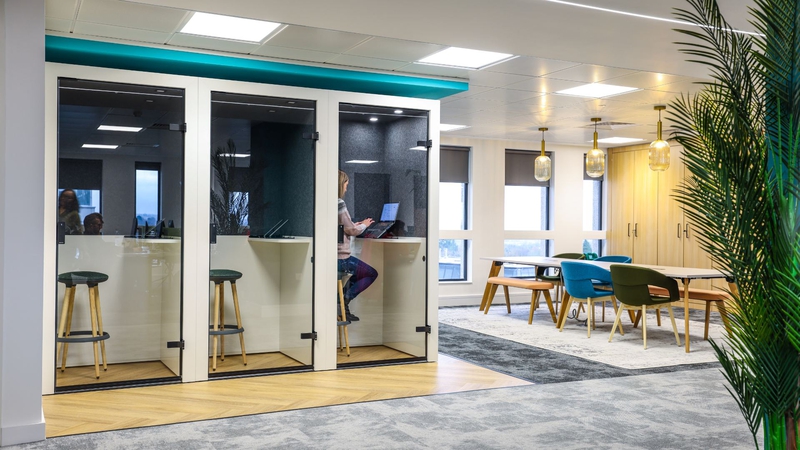










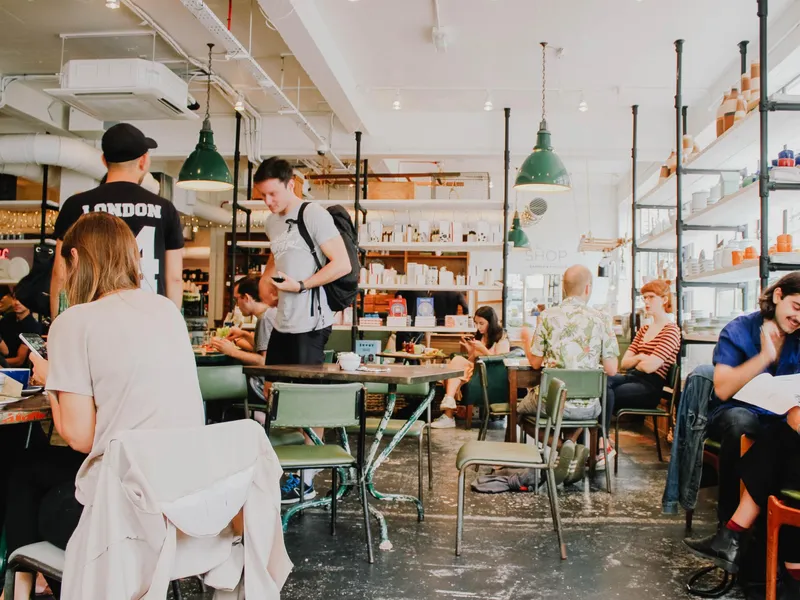

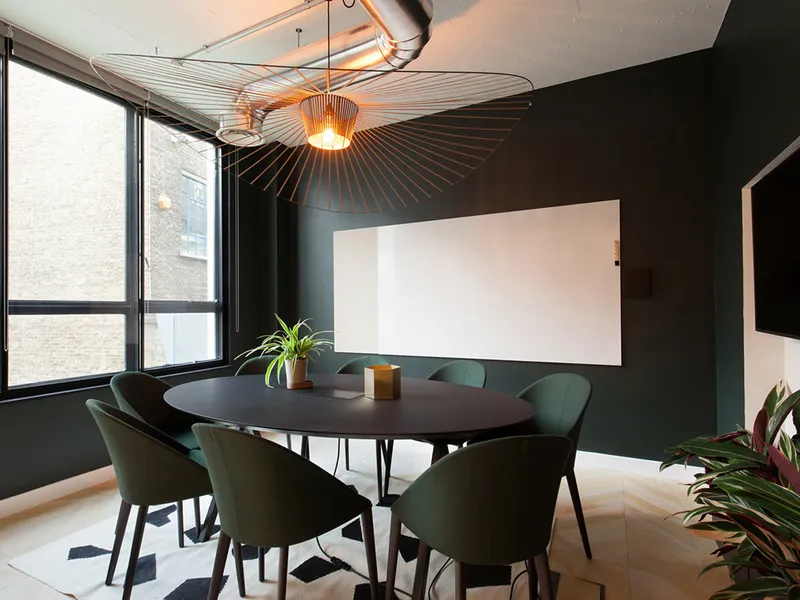
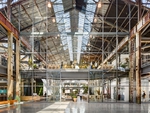
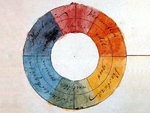
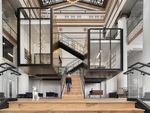
_medium.jpg)
